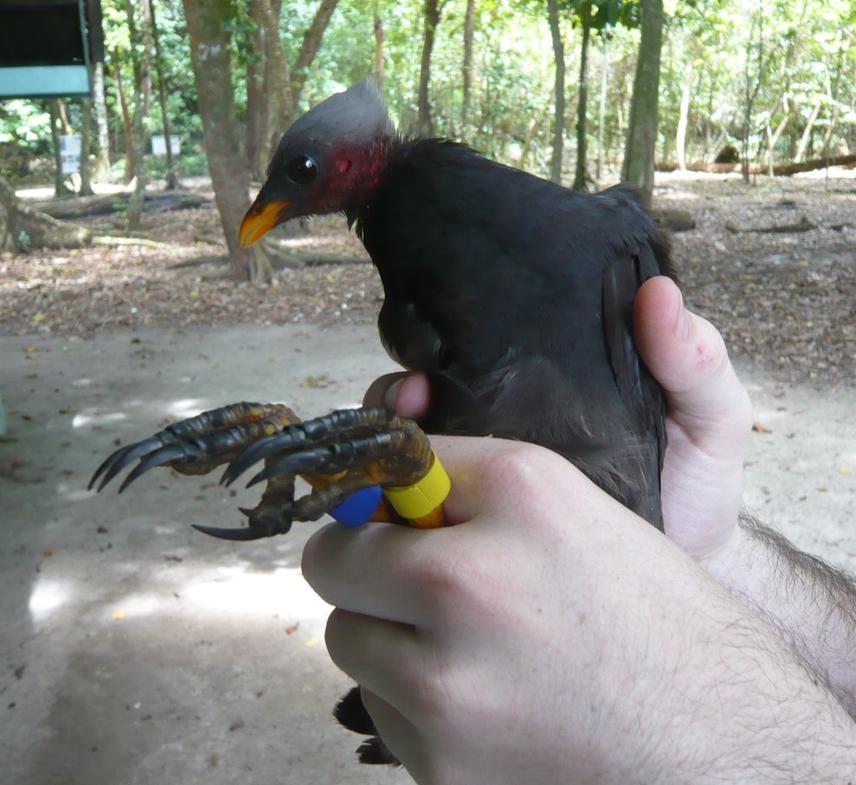Robert Davis
We will assess population size, ecology, dispersal capacity and predation risk of the Micronesian Megapode in Palau and model the impacts of sea level rise on future viability.

Micronesian megapode being banded by Paul Radley.
Pacific islands have accounted for 79% of bird species extinctions in the past 500 years. This situation will worsen with climate change, with models predicting Oceania to be among the hardest hit regions. We will study the endangered Micronesian Megapode (Megapodius laperouse senex) in the Republic of Palau as a model for investigating the impact of rising sea levels. This species nests close to shorelines and has already lost up to 20% of its breeding habitat during storm surges. It is also threatened by rats and increasing tourism which might interact with climate change pressures to further endanger this bird. We will assess the risk to this species from future sea level rises by modeling how much of their already limited nesting habitat will be inundated. To understand their ability to adapt to this habit loss we will undertake radio-tracking to determine important feeding habitat, genetic studies on inter-island movement and use remote cameras to monitor rat predation impacts on nests and chicks. The primary outcome will be to identify refugia from climate change and understand the ability of megapodes to adapt to these future challenges. This will allow conservation prioritization of key sites in a climate change adaptation context and inform invasive rat eradication programs.
This project will serve as the first detailed study of the endangered Micronesian Megapode in Palau and the first assessment of existing and future threats to it. The Micronesian Megapode serves as an umbrella species in Palau. Its high vulnerability to sea level rise, ground-nesting habits, and restricted distribution mean that management actions intended to protect the megapode will likely benefit a suite of others, including the potentially endangered and poorly known Palau Ground-Dove (Gallicolumba canifrons). As most Pacific islands are equally vulnerable to the impacts of climate-induced sea level rise, our study will have broad significance for species across the Pacific, a region characterized by having the highest rate of bird extinctions globally.